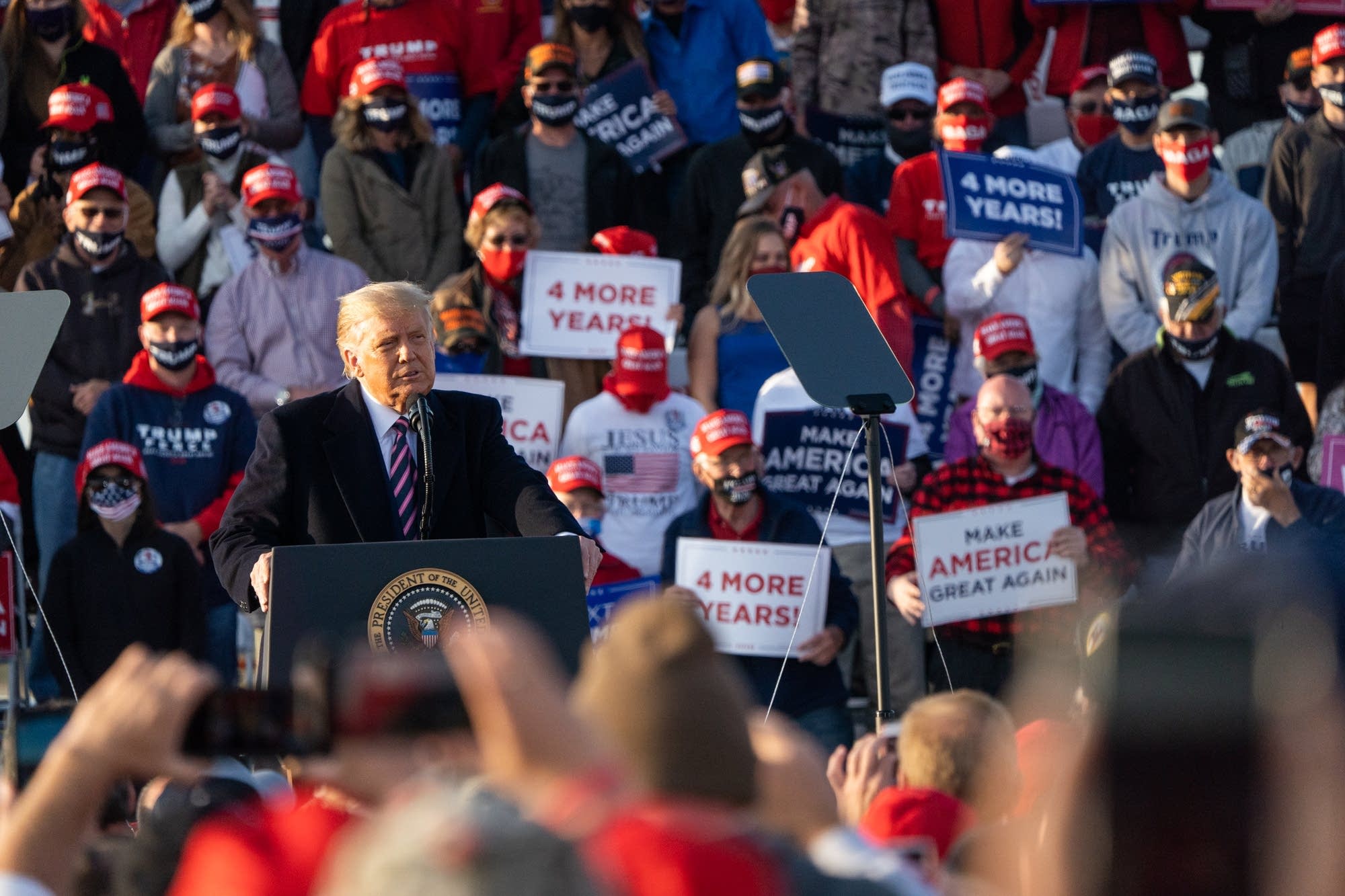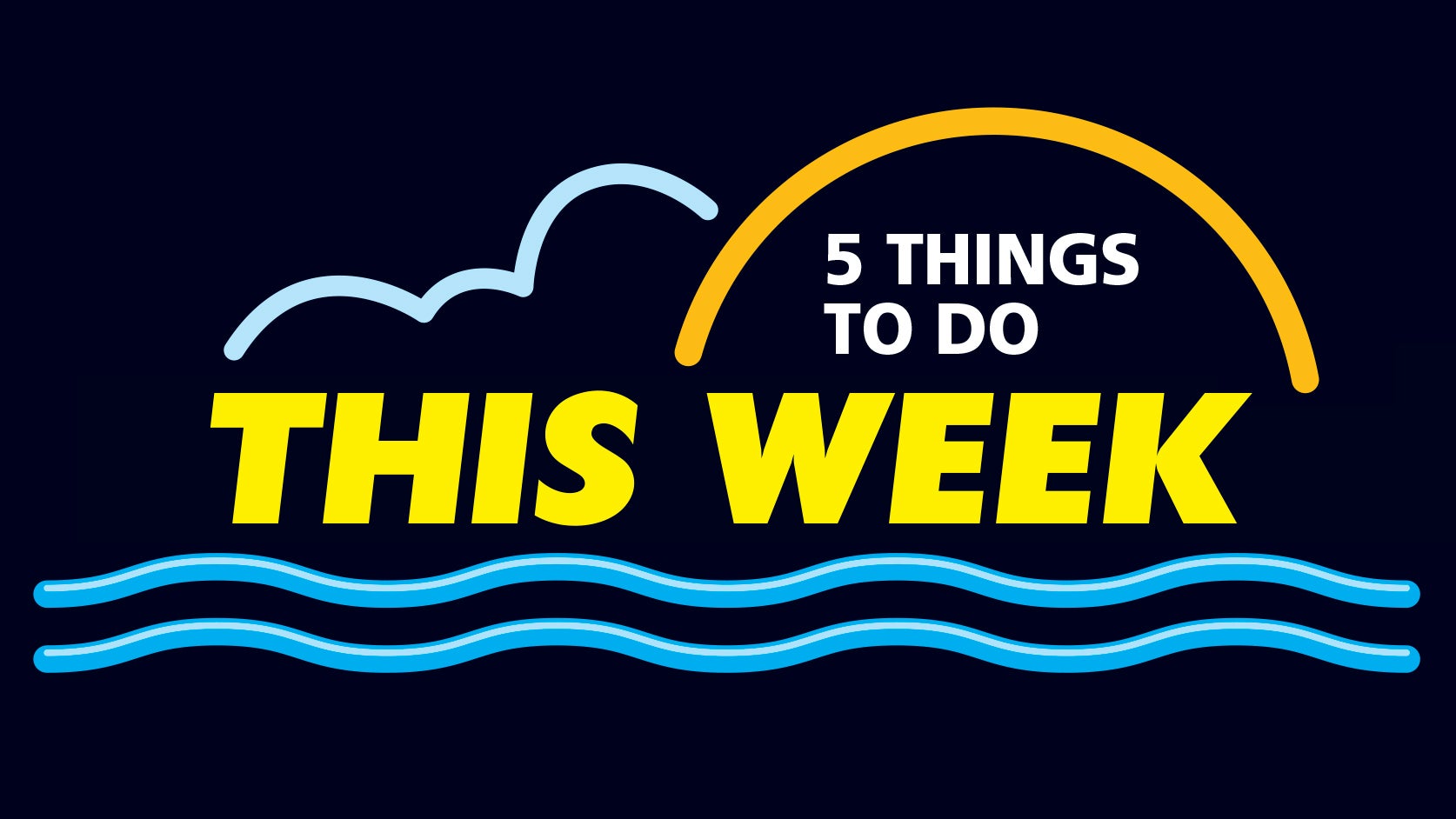Trump visit to Duluth highlights growing fight for union voters
Published 10:54 am Wednesday, September 30, 2020

- President Donald Trump addresses the crowd during a rally in Bemidji on Sept. 18, 2020. Evan Frost/MPR News file
|
Getting your Trinity Audio player ready...
|
By Dan Kraker, Minnesota Public Radio News
Northern Minnesota again finds itself at the center of the political universe Wednesday, as President Donald Trump holds a campaign rally at the Duluth airport at 8 p.m.
The visit comes just a week and a half after Trump held rally in Bemidji — on the same day that his Democratic challenger Joe Biden visited a union training center in Duluth. And it comes the day after the first, fraught debate in the presidential race.
Since the campaigns officially began, both Biden and Trump have been working hard to appeal to working-class voters — especially those in northeastern Minnesota.
Four years ago, Trump carried the 8th Congressional District, which covers northeastern Minnesota’s North Shore and Iron Range, from Canada to Bemidji to Lake Superior and south nearly to St. Cloud, by 16 points.
But Cindy Rugeley, a political scientist at the University of Minnesota Duluth, said Biden could turn out a lot of voters who stayed home last time, thanks to his focus on issues of importance to the region.
“He has been very outspoken and pro-labor union,” Rugeley said. “But at the same time, Trump comes in with a pretty solid base of support.”
That’s a base the president has been trying to build since he first visited Duluth in 2018. It’s part of his aggressive campaign to become the first Republican to win Minnesota in nearly a half century.
Much of that hope hinges on his ability to sway union members in this staunchly pro-labor region of the state.
Wayne Nordin, a senior manager for the North Central States Regional Council of Carpenters union, who’s based in Virginia, said a lot of union members are receptive to Trump’s narrative.
“They want jobs, they want mining to last,” he said of his members, many of whom work as millwrights in the giant taconite pellet plants that dot the Range. ”It’s life up in northern Minnesota.”
For decades, the Democratic party was largely seen as the defender of that way of life. But that’s shifted in recent years, as many rural residents increasingly view Democrats as more focused on the Twin Cities metro area, and as cultural issues become more important in the minds of voters.
“I believe a lot of it is a culture war,” said Rugeley. “It’s an us versus them message, particularly on [Trump’s] part.
When Norm Johnson first went to work at the old LTV Steel taconite plant in Hoyt Lakes, on the far eastern Iron Range, in the 1970s, he voted Democratic. So did most mine workers on the Iron Range, a longtime union stronghold.
But now, Johnson, 65, is a fervent Trump supporter.
“Trump’s done more for northern Minnesota than any other president in my lifetime,” he said.
Johnson lives in Duluth and is retired from the mines and a stint at the Sappi paper mill in nearby Cloquet. He saw Vice President Mike Pence when he campaigned in Duluth last month, and Donald Trump Jr. when he was in town a few weeks ago. He’s hoping to see the president in person Wednesday night at his hangar rally at the Duluth airport. Trump will make a short stop in the Twin Cities for a private fundraiser before heading to Duluth.
Johnson admits Trump can be blunt, but he said he’s done what he said he would do.
“The unions have been complaining about cheap steel from China and South America ever since I can remember,” he said. But it was Trump, he said, who slapped tariffs on steel imports.
Wednesday night, as he did in Bemidji, the president is expected to take credit for bringing mining back to the Iron Range.
The reality is more nuanced. The Obama and Trump administrations both took action against illegal steel imports — an important stance on the taconite-mining Range — and most mines that had shut down during a downturn in 2015 reopened before Trump was elected.
Nordin’s carpenters’ union hosted Biden’s visit earlier this month, at its apprentice training center in Duluth, although it hasn’t formally endorsed the candidate’s run. But the union has endorsed Republican Rep. Pete Stauber, who’s running to keep his seat in the 8th District.
It’s indicative of the gray area here. Nordin said the union supports candidates who support its interests, regardless of party. Sometimes, that’s Republicans like Stauber, who Nordin calls a “pro-union Republican.”
But Nordin said more typically, it’s Democrats who best support the interests of labor — even if some also oppose proposed copper-nickel mines in northeastern Minnesota, and the Line 3 oil pipeline project, which unions support.
“I don’t always agree with what the Democrats do,” he said. “And sometimes when it comes to our industrial type work, we end up fighting our own party.”
But when it comes to the presidential election, he said that during Biden’s visit, the former vice president was well-versed on issues important to the union, including apprenticeship programs, worker rights and prevailing wages for government contracts.
In contrast, “I haven’t heard President Trump praise unions or anything like that.”
Still, Nordin said, rank-and-file union members are pretty divided, with lots of issues that bring them to the polls, from jobs to social issues.
“Our members are real strong on gun rights,” he said. “So that’s the most common theme I hear from our membership, [about] why they’re supporting Trump.”
Andy Lindberg is among those carpenters’ union members supporting the president.
“I’m as an enthusiastic supporter of President Trump as you could hope to get,” he said. “I think blue-collar Americans really, if they look at the record, need to be thankful that Donald J. Trump got elected four years ago.”
Lindberg, who lives in Minneapolis, is a third-generation carpenters’ union member. He said he doesn’t talk politics with his dad, a staunch DFLer. But he thinks Trump is a lot like people who work in the trades: He gets things done, Lindberg said — like replacing the North American Free Trade Agreement with a new U.S. treaty with Mexico and Canada.
“For decades, absolute decades, we’ve been hearing about what a raw deal NAFTA was,” he said. “And all we ever got from the politicians was, well, they couldn’t do this. They couldn’t do that. Donald Trump walks in, and within three years, it’s all rectified.”
Many unions said the new deal was better for U.S. workers. Still, some longtime Iron Range labor leaders have a hard time comprehending union members’ support for the president.
“He doesn’t care about workers,” said Alan Netland, president of the Northeast Area Labor Council, a division of the AFL-CIO that represents about 40,000 union members in the northeastern part of the state. “If you look at his record, he’s been terrible for workers. You know, his judicial appointments are all anti-union, his National Labor Relations Board appointees are terribly anti-union.”
Netland concedes there’s a lot of enthusiasm for Trump in the region, especially outside Duluth, where he says he sees as many signs as he did four years ago.
Rugeley, the UMD political scientist, said the president needs to at least match the votes he got in northeastern Minnesota four years ago, if he hopes to make up for the overwhelming edge Biden enjoys in the Twin Cities. That’s why she believes Trump, and his surrogates, continue to campaign in the region.
“I think he’s doing it with the awareness that he really has to just blow it out [of the water] if he’s going to stand any chance at all,” she said. “He’s obviously trying to get every chicken from the henhouse. He’s not going to leave anything behind.”




